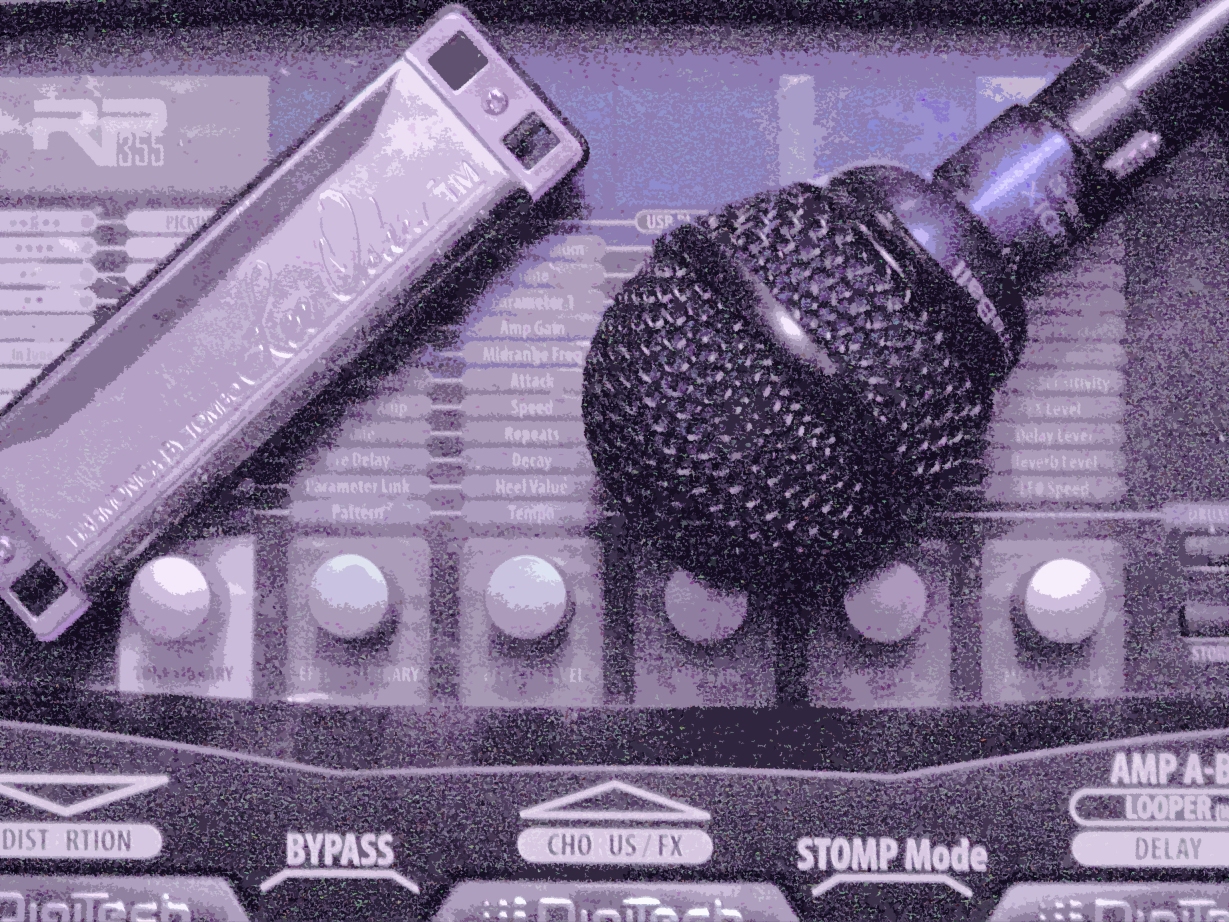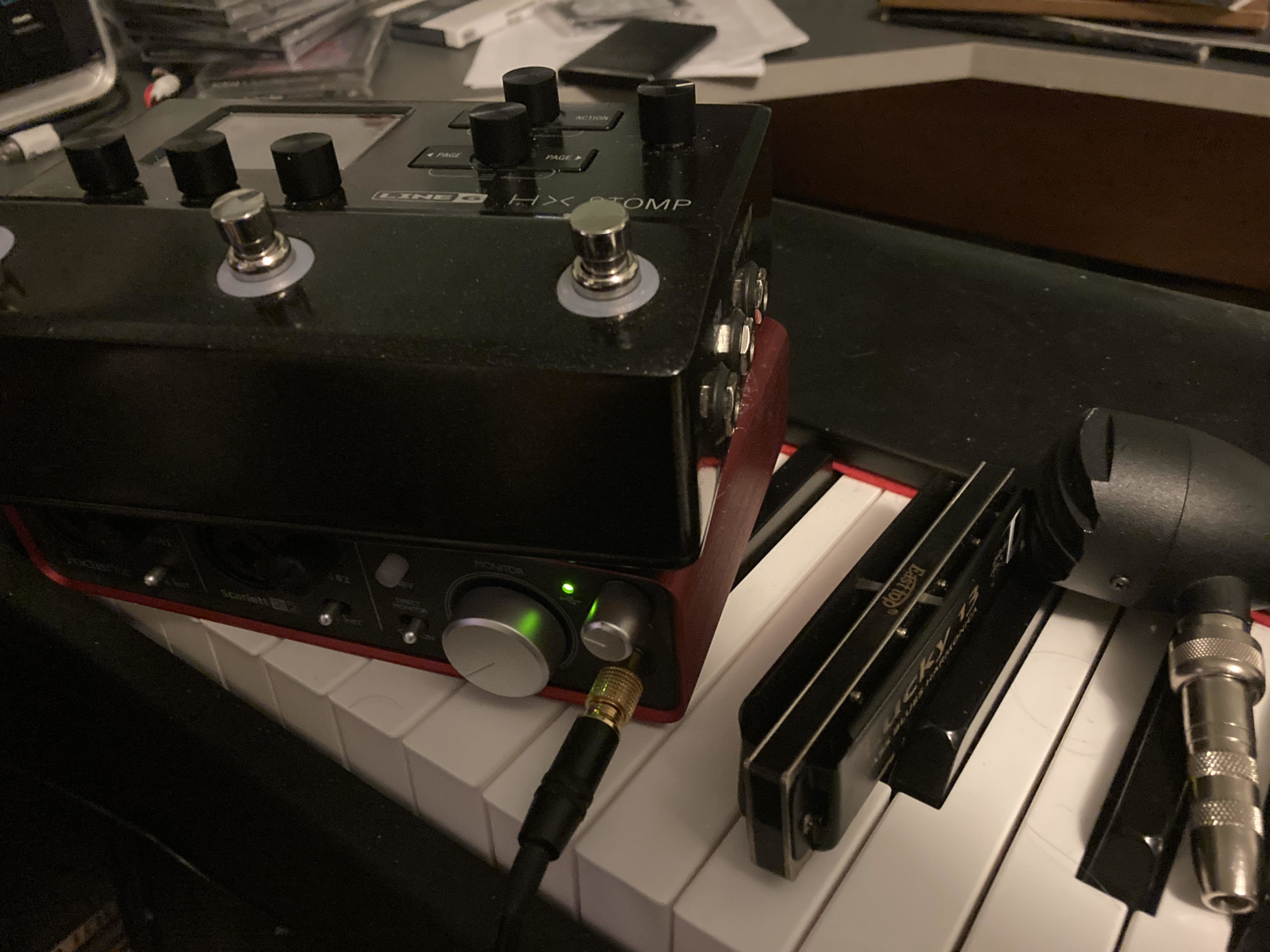
RP Tip #2: using two RPs
RPs are cheap, really, when you compare the cost of an RP to the cost of a dedicated effects device that only does one thing. There are plenty of guitarists out there who use more than one effects pedal, and there’s no reason why you can’t do the same with two RPs.
All you have to do is run the output of one RP into the input of the other. Now any sound that comes from the first RP in the chain will be processed by the second RP in the chain.
If you’ve got two of the same device–say, two RP255s or RP355s–you can use the first one to run all the amp modeled patches (say, from my version 14d patch set), and the second to run the FX-only patches from my version 15 FX-only set. Now you’ve got your amp modeled patches and effected patches running into a whole ‘nother effect.
This works great for stuff where one patch just won’t do it. For example, let’s say you really like one of the low-octave patches, but you wish you could run it with a rotating speaker effect for an organ sound. With two RPs, you can put the low octave patch on the first one in the chain, then put the rotating speaker effect up on the second RP. And you’ve got footpedal control over every effect in the chain.
If you do this, it’s a good idea to put any reverb or delay FX on the second device in the chain, not the first. Things get muddy pretty quickly when both devices have reverb or delay on them.
Related Posts
4 Comments
Leave a Reply
You must be logged in to post a comment.
WHAT’S NEW
Categories
- Audio/Video
- Blog
- Blue Future
- Digitech RP Tricks and Tips
- Discography, CDs, Projects, Info, Notes
- Featured Video
- For the Beginner
- Gallery
- Hunter's Effects
- Hunter's Music
- Huntersounds for Fender Mustang
- Meet the Pros
- More Video
- MPH: Maw/Preston/Hunter
- My Three Big Contributions
- Player's Resources
- Pro Tips & Techniques
- Recommended Artists & Recordings
- Recommended Gear
- Recorded Performances
- Reviews, Interviews, Testimonials
- The Lucky One
- Uncategorized
- Upcoming Performances
- Zoom G3 Tips and Tricks


I think I’ll add Digitech RP255 to my pedalboard for effects only. I love Lonewolf Harp Atack as drive pedal, MXR Carbon Copy as slapback delay, Boss HR-2 as octave, but I want set of some odd effects like wah, leslie, phaser, chorus, autowah, ring mod, 4th each of them I’m going to use for one-two songs per gig, I have no place for all of odd effects in my pedalboard, while one RP255 can be the only.
Hi Boris, if you’ve got the extra money and the space on stage, the RP355 is a better deal, especially if you think you might want to use it for amp modeling too someday. On the effects side, there’s no ring modulator in the RP255, and the 355 has more flavors of flange, chorus, etc. Finally, you get two LFOs in the RP355, and you can do some pretty ear-catching stuff with those.
Whichever way you go, I ship my patch sets with an FX-only set (no amp modeling or EQ), just the thing to put between your other pedals and your amp. Let me know if you’re interested.
I just bought the 255 specifically to take advantage of your patches. 3 things – Now that I’m looking at it I’m wondering if the 355 isn’t the real deal. I over looked no xlr which would be nice and the other advantages you point out. What if I was to use two different models and lastly, what’s an LFO? Thanks Richard.
Hi Darren, the XLR output is potentially very nice, but I haven’t used it since I bought my RP355–the device sounds just fine for both performance and recording using the 1/4″ outs. Where the 255 and the 355 overlap (in terms of FX and amp models), I can’t tell the difference in the sound. (For that matter, even the 155 sounds great!) I do miss a couple of features that are on the 355 but not the 255. The thing I miss most on the 255 is the FX25 envelope filter, which is just plain murder for all kinds of funk and rock. I also miss the Digitech Blackbass amp model, but I can live without that more easily than I can the FX25. I wouldn’t dump the 255 just because it doesn’t have XLR outs.
LFO stands for “low frequency oscillator”. What it does is apply some kind of modulation to a sound on a periodic basis–for example, you can use it to rapidly alternate pitch shift between a low octave and a high octave, or to fade an effect in and out in a particular tempo. Some of my synth-iest patches for the RP350/355 use it. The 255 doesn’t have it, but it has some very nice modulation FX on it, including a good chorus, flanger, vibrato, and of course the terrific pitch shifter and whammy. These and the vibrato in particular are very powerful and deep; you can radically change the sound of the harmonica with them.
If you use two different Digitech models simultaneously, you either run them in series, with the output of one going into the input of the other, or you need a way to split the signal from your mic to both devices, and enough inputs on your amp or mixer to handle the outputs from both devices. I think the second way, running them in parallel, sounds better, and the gear to do that is effective and relatively cheap, but I found that it got VERY complicated to handle all that stuff on stage–much easier in the studio, of course–and so now I perform with a single RP355 (or a 255 or 155 on the road when I have to travel light) and I’m very happy with the sounds I’m getting. I see now that I could put another RP on the floor in place of my looper without complicating the setup, but of course only if I didn’t need the looper, which I usually do lately.